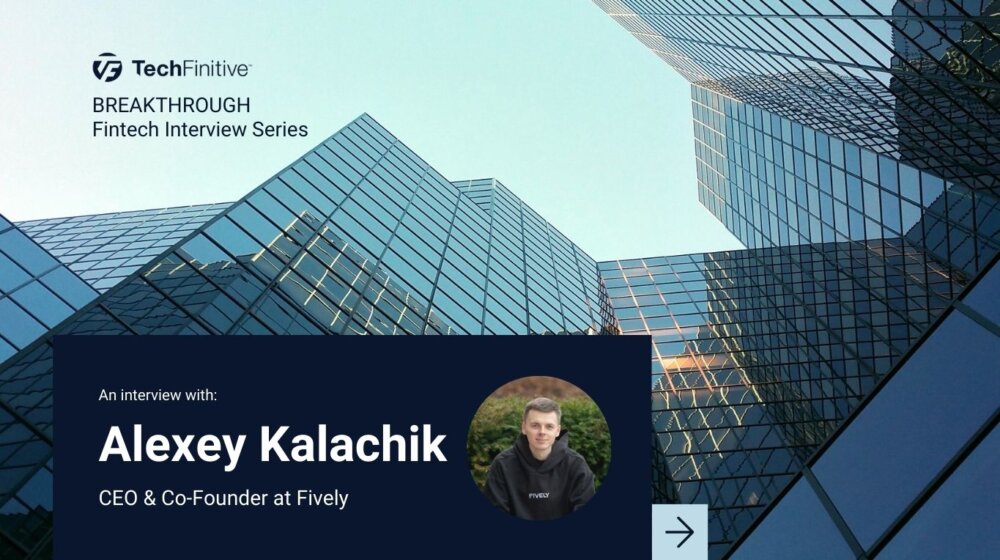
Oleg Egorov, CMO at Flowwow: “The marketers’ key skill will be the ability to create the right prompt”
Since launching in 2014 as a flower delivery service, Flowwow has been on a tear. Ten years on, the Budapest-based company has evolved into a peer-to-peer marketplace, selling products ranging from arts & crafts items to clothing and pastries.
Today it enables e-commerce for more than 10,000 businesses across 900+ cities around the world. While those numbers can’t compete with giants such as Amazon, eBay and Etsy, underestimate it at your own risk. Flowwow has been steadily expanding, investing in lucrative markets like South America and, more recently, the Middle East.
Part of that expansion was driven by necessity. Founded in Russia, the company moved its headquarters to Budapest in 2022. Since its home country invaded Ukraine, there’s been an exodus of talent, with many fleeing the war, mass conscription and the ongoing economic collapse. Foreign investment has dwindled, forcing many startups to move elsewhere.
It is against this backdrop that we caught up with Oleg Egorov, Flowwow’s CMO. Having joined in June 2018, Oleg now manages a team of 40 – roughly a quarter of Flowwow’s 170+ staff – and oversees all things marketing and analytics. With an unsatiable desire to learn – keep reading to see what books he recommends – Oleg shares his views on a range of Martech topics, including his take on how AI, AdTech and programmatic advertising are shaping the industry.
Why Dust or Magic? That stems from a quote by legendary American advertising creative director, William Bernbach: “An idea can turn to dust or magic, depending on the talent that rubs against it.” (And if you’re wondering where you’ve heard the name, Bernbach was the inspiration behind Don Draper of Mad Men fame.)
What are your thoughts on the escalating integration of AI in digital marketing and its potential influence on the future of marketing, Martech and social media?
Today, artificial intelligence largely facilitates the work of a marketer in terms of selecting a target audience, creating creatives and conducting competitive analysis. Hence, the general use of AI in marketing activities has grown from 29% in 2018 to 73% in 2023, according to Statista. Obviously, thanks to AI, the effectiveness of marketing tools has increased significantly.
However, the amount of work does not diminish. As an old saying goes, “garbage in and garbage out” – a marketer needs to feed the advertising tools with the right data, understand the specifics of value attribution and the product’s competitive advantages, and know their competition to craft an effective technical task for the development of a creative. Besides, they need to continuously look for new hypotheses.
I think that, in the future, artificial intelligence will play an even more significant role – not only in automating routine tasks but also in making strategic decisions, like distributing advertising budgets between different sources or forming positioning. In the end, the marketers’ key skill will be the ability to create the right prompt.
How do you ready yourself for an AI-driven landscape as a marketing leader? What new skills do you need?
As I mentioned before, one of the crucial skills is the ability to ask AI the right questions, and I think it is necessary to understand, at least at a basic level, how AI algorithms work. Now, AI to me is an assistant who helps me analyse competitors’ websites, fact-check and edit texts, test tasks’ answers, etc.
Related reading: AI mind-readers can eavesdrop on people’s brains
Looking ahead to 2024, what AdTech trends do you expect to dominate?
I am sure that the internal algorithms of machine-learning advertising tools will continue to improve. There will probably be a more massive trend in generative AI and its integration with advertising platforms. Meta has already launched the possibility to craft creatives, including a video component, directly inside Facebook ads. With generative video tools, it will be cheaper to produce professional-looking video content for a fraction of the price in 2024.
At the same time, the ban on tracking IDFA will complicate the tracking of advertising effectiveness, thus various AI attribution models will be in high demand to do the evaluation.
Do you anticipate any significant disruptions in marketing and sales technology for 2024? If so, what?
So far, the main failures may be related to the transmission of target events from tracking systems, like AppsFlyer and Adjust. We already find it hard to assess whether our investments in iOS campaigns for Google Ads UAC (Universal App Campaigns) are effective. Trust in the data has decreased.
Related reading: How companies can avoid the ‘Product Death Cycle’
How do you perceive programmatic advertising in today’s marketing landscape?
The idea of programmatic advertising is very promising. For example, by 2023, programmatic spending has reached over $140 billion, according to eMarketer.
However, most programmatic platforms do not provide the necessary transparency. Google ads UAC is only partly programmatic as the impressions are bought from third-party publishers/SSPs [supply side platforms]. This can potentially lead to fraud on the publisher’s part and a high percentage of fraud traffic.
Could you share some of your most noteworthy accomplishments that you take particular pride in?
I am proud that every year my team manages to achieve our annual goals of ensuring multiple growth of the company’s turnover and fit into the target indicators of advertising costs. We have also managed to diversify the advertising sources for attracting target customers, reducing the dependence on standard channels, like search advertising and SEO traffic.
In our split, there are more than 40 different segments that we are actively optimising and increasing our expertise in – in particular, traffic from social networks, in-app traffic, partner integrations and geo services.
Of course, I am proud of my team in general: we have highly qualified experts on board, without whom it would simply be impossible to achieve such results.
Recommended reading: Optimise your career prospects with a job in Martech
What core values have played a pivotal role in shaping your approach to marketing and communication?
Probably one of the key values in shaping our marketing strategy is a careful attitude to the user. We do not use aggressive advertising methods, such as SMS mailings or messenger messages. In our marketing strategy, we also do not do dumping or link advertising – instead, we try to emphasise our product’s convenience, the wide range we offer, and our reliability.
How do you ensure you’re up-to-date with the latest marketing trends and technologies, and how do you integrate them into your strategies?
So far, the most effective way to be on trend for me is to attend conferences, especially international ones. Attending the Gitex Global Dubai conference, for example, has helped me realise that AI is the main trend now – and that there is clearly a trend for communication with the consumer to be more empathetic and humane.
What piece of advice would you offer to fellow marketing leaders that has been particularly beneficial to you personally?
I would advise you to never stop learning. I have a rule: I read at least two books a month about marketing. For marketing leaders and enthusiasts, I recommend Alice M. Tybout “Kellogg on Branding in a Hyper-Connected World, Richard Shotton’s “The Choice of Factory” and Brad Stone’s “The Everything Store”.
Communicate with your colleagues in the industry: for example, I am in a chat group of CMOs where we sometimes share approaches to handling complex tasks, like budget planning. Develop your team’s expertise, trust your colleagues and employees, and do not be afraid to hire people with higher expertise than you.
And, finally, enjoy what you do – my grandmother used to say she lived a happy life only because she went to work as if it were a holiday.
What Martech technology has your company recently embraced and what difference has it made to your business?
It is probably a tool for multidimensional planning of advertising budgets: traffic sources, regions, product categories and platforms. With this tool, we get a forecast for the next reporting period and simulate the forecast’s potential changes depending on the change of budgets in a certain segment, region, or category. This allows us to see the picture in a ‘zoom-in’/‘zoom-out’ format. We have developed this tool together with the analysts using a stack of MMP Adjust, GA4, BigQuery and Looker Studio.
NEXT UP

Say goodbye to scattered data with Salesforce Unified Knowledge
Scattered data is a problem for workers, customers and newly introduced AI. But now, Salesforce Unified Knowledge gathers siloed info from inside and outside a company.

Alexey Kalachik, CEO & Co-Founder at Fively: “The potential for digitalisation within insurance is enormous”
We interview serial entrepreneur Alexey Kalachik, CEO & Co-Founder at Fively, on the future of fintech and what makes this space so exciting for startups.

IBM bolsters AI push with Microsoft Copilot launch
In a bid to boost its AI offering, IBM Consulting will enable enterprises to create and manage AI copilots – including Copilot for Microsoft 365